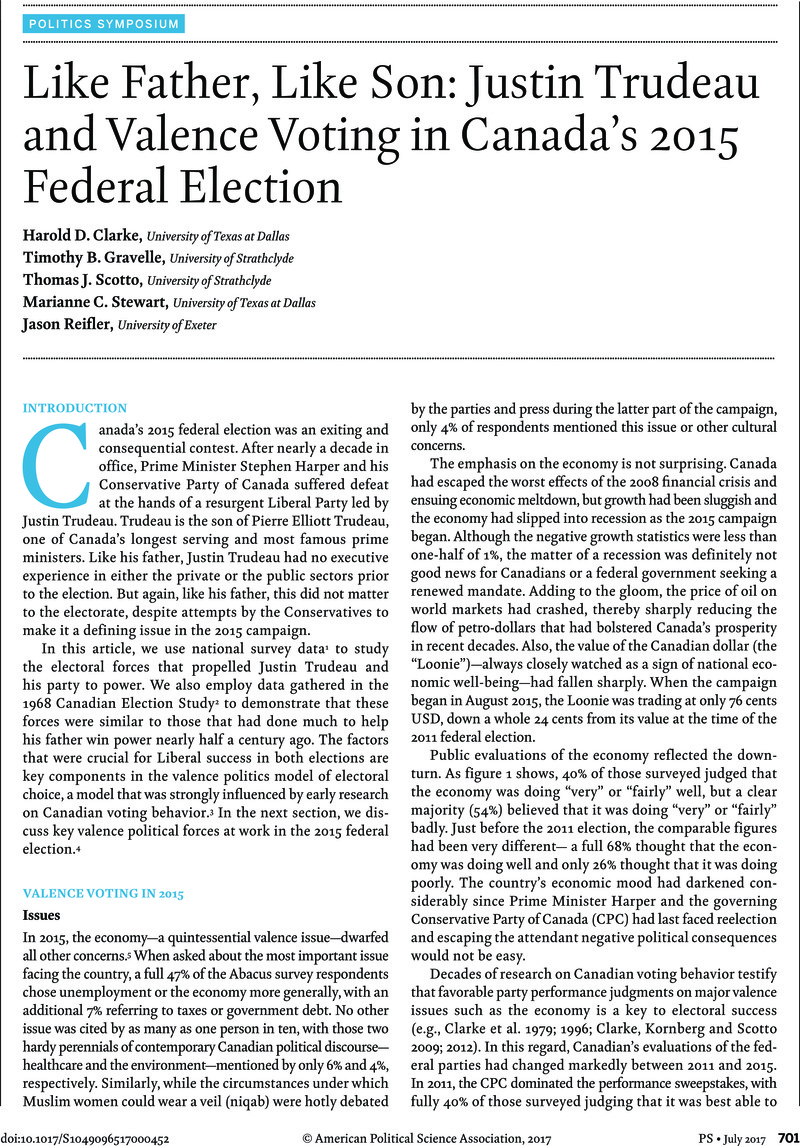Crossref Citations
This article has been cited by the following publications. This list is generated based on data provided by Crossref.
Lalancette, Mireille
and
Raynauld, Vincent
2019.
The Power of Political Image: Justin Trudeau, Instagram, and Celebrity Politics.
American Behavioral Scientist,
Vol. 63,
Issue. 7,
p.
888.
Lalancette, Mireille
and
Raynauld, Vincent
2020.
Politicking and Visual Framing on Instagram: A Look at the Portrayal of the Leadership of Canada’s Justin Trudeau.
Études canadiennes / Canadian Studies,
p.
257.
Sciubba, Jennifer D.
2021.
Global Political Demography.
p.
325.
Zur, Roi
2021.
Stuck in the middle: Ideology, valence and the electoral failures of centrist parties.
British Journal of Political Science,
Vol. 51,
Issue. 2,
p.
706.
Kymlicka, Will
2021.
The Precarious Resilience of Multiculturalism in Canada.
American Review of Canadian Studies,
Vol. 51,
Issue. 1,
p.
122.
Borzillo, Laurent
and
Massie, Justin
2021.
Le Canada, la France et la guerre contre Daech.
Études canadiennes / Canadian Studies,
p.
189.
Westlake, Daniel
2022.
Ready or Not? The Strength of NDP Riding Associations and the Rise and Fall of the NDP.
Canadian Journal of Political Science,
Vol. 55,
Issue. 2,
p.
418.
Vossen, Kelly Céleste
2022.
Analyse exploratoire de l’ethos de Justin Trudeau sur Instagram : une approche mixte, multimodale et inductive.
Enjeux et société: Approches transdisciplinaires,
Vol. 9,
Issue. 1,
p.
66.



